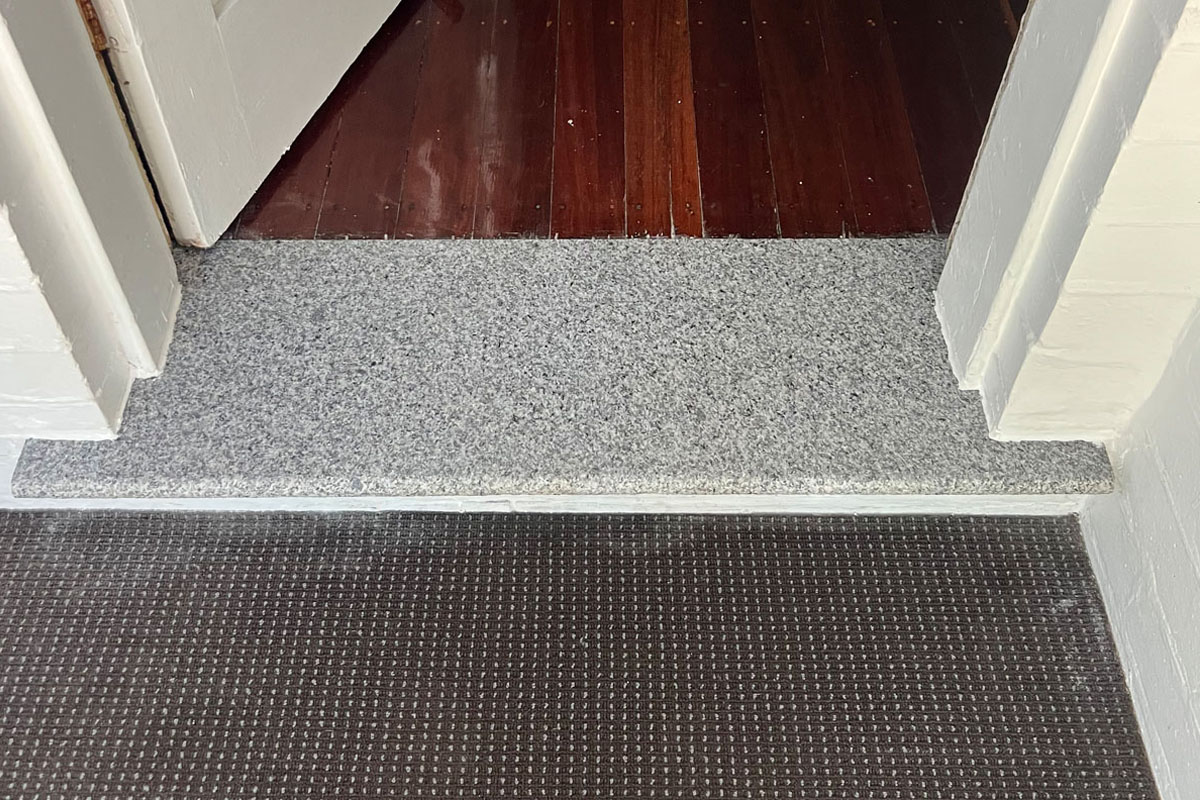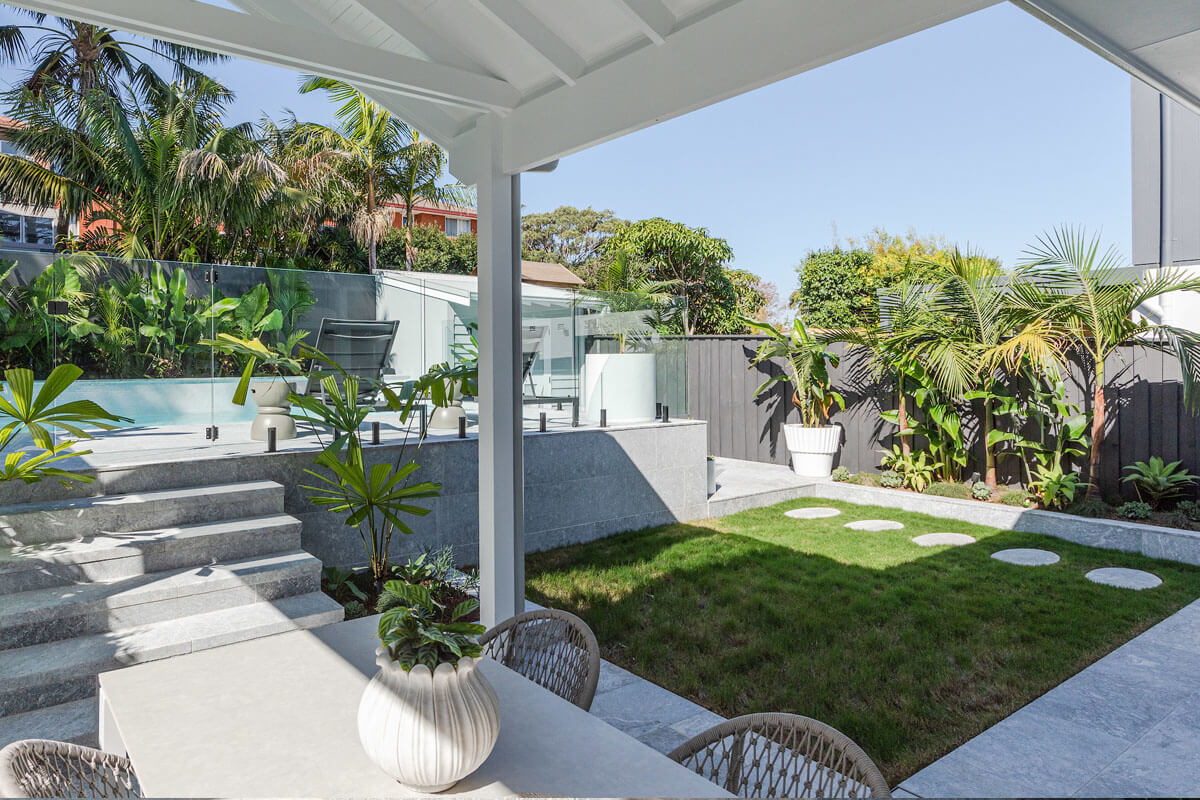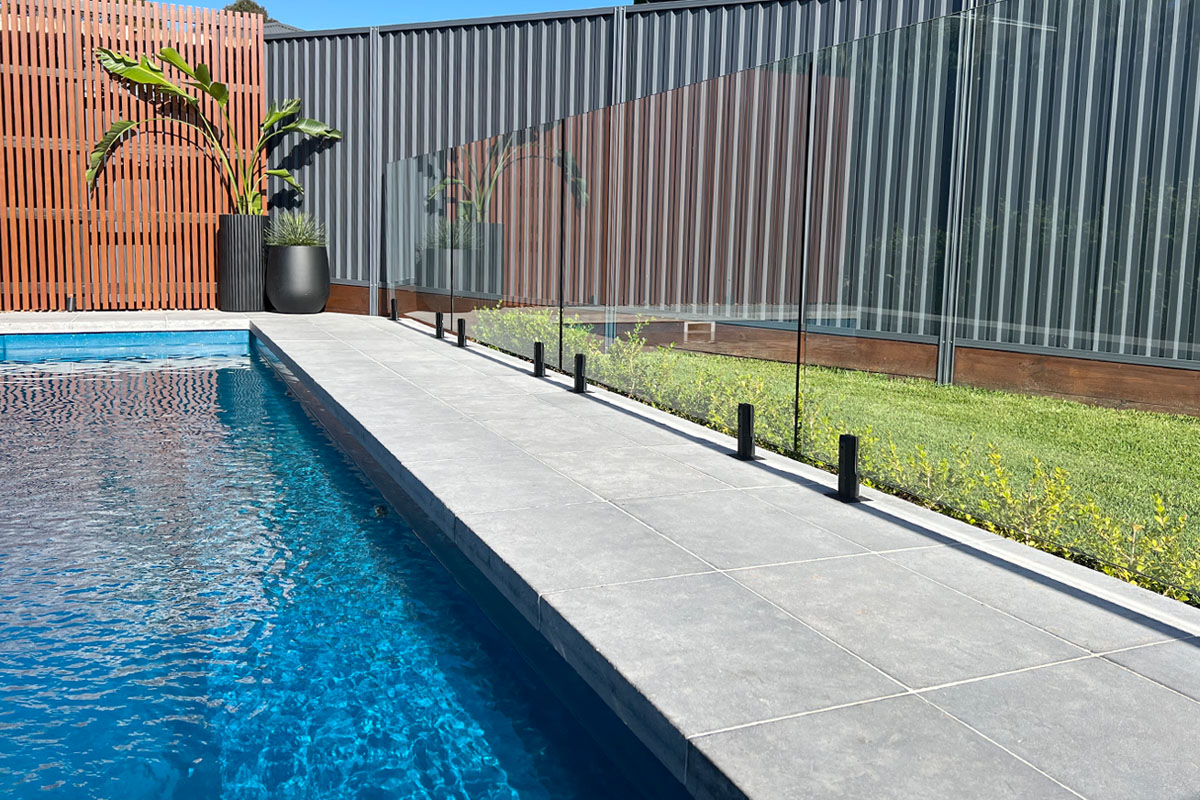6 Steps to Correctly Installing Fibreglass Pool Coping and Pavers
Installing a fibreglass pool is both an asset and a luxury for your outdoor space.
So as a homeowner or contractor, it’s crucial that the installation is done correctly.
Because once the fibreglass shell is installed, it is very hard to change.
That’s why choosing the best pool coping material and paving is of paramount importance.
Alongside the above, you also need to consider:
1. The necessary Earthworks and/or Groundworks to be completed for the area
2. Steelwork reinforcement
3. Relevant concreting works
4. Waterproofing the slab prior to installing the coping
5. Choosing the correct pool coping and installation methods, and
6. Sealing the pool, pavers and coping once everything is complete.
In today’s blog we will review each step so your installation of the fibreglass pool is a successful one.
Let’s begin – here’s how to install a fibreglass pool correctly.
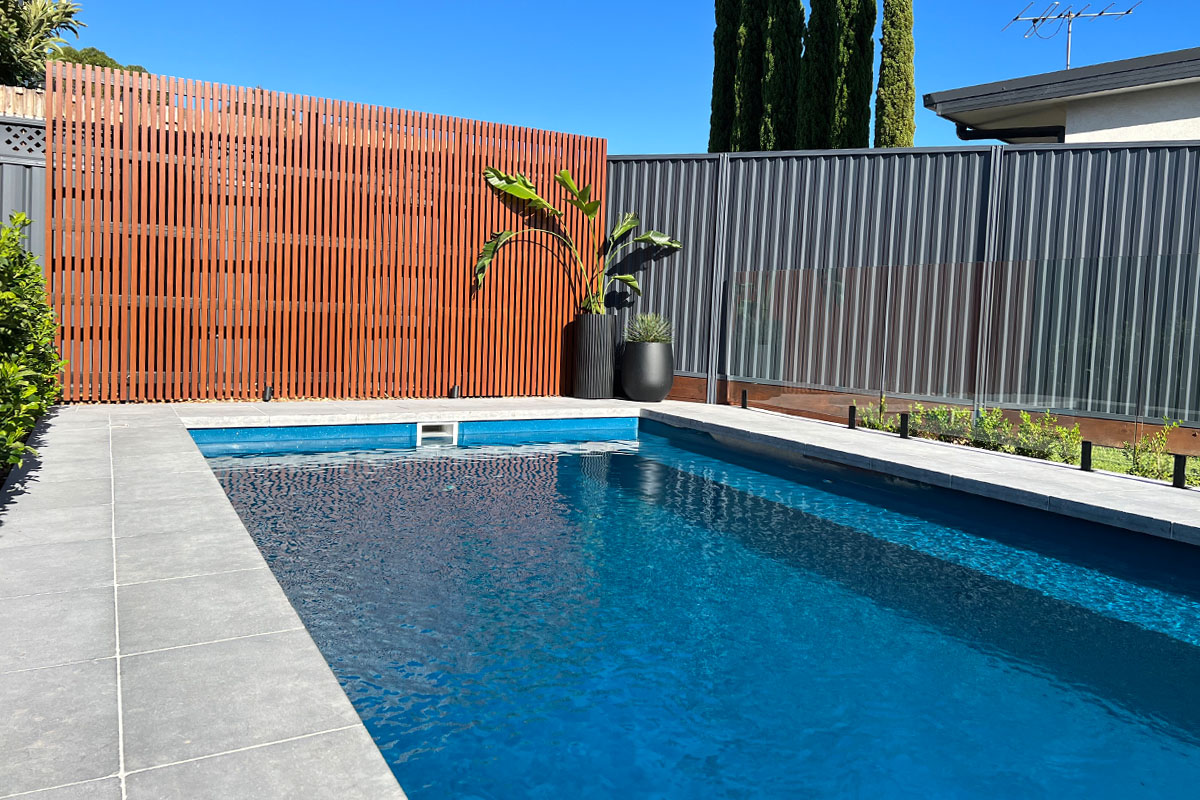
1. Earthworks or Groundworks
Before installing the fibreglass swimming pool shell or starting any excavation or concrete work, you (or a contractor) needs to assess the existing ground cover and soil. You need to assess if the existing soil is:
● Clay-based
● Sandy
● Rock or sandstone, or
● Backfill and rubble
This is important because you want to ensure that any concrete footing installed in and around the pool will stand the test of time against the elements.
Knowing the soil you’re working with, will determine the correct method of installation.
You also want to ensure that your concrete foundation holds the weight of the fibreglass shell, pavers, coping and water.
This is why it’s important that you install a compacted road base or subbase footing under the concrete footing.
This type of foundation is non-permeable.
This means that once compacted it’s:
● Self-draining
● Holds the structural weights
● Reduces any shrinkage of the concrete after installation.
2. Steelwork
Before starting the concreting, you need to install the correct reinforcements.
These reinforcements are typically in the form of steelworks.
These need to be identified by a structural engineer.
For example, you might need to use SL82 reinforced concrete mesh for the coping bean and to bond the surrounds.
You may also need N12 rolled galvanised bars at appropriate spacings in the bond beam footing to hold the structure together.
This step is very important, so be sure to hire a licensed professional structural engineer.
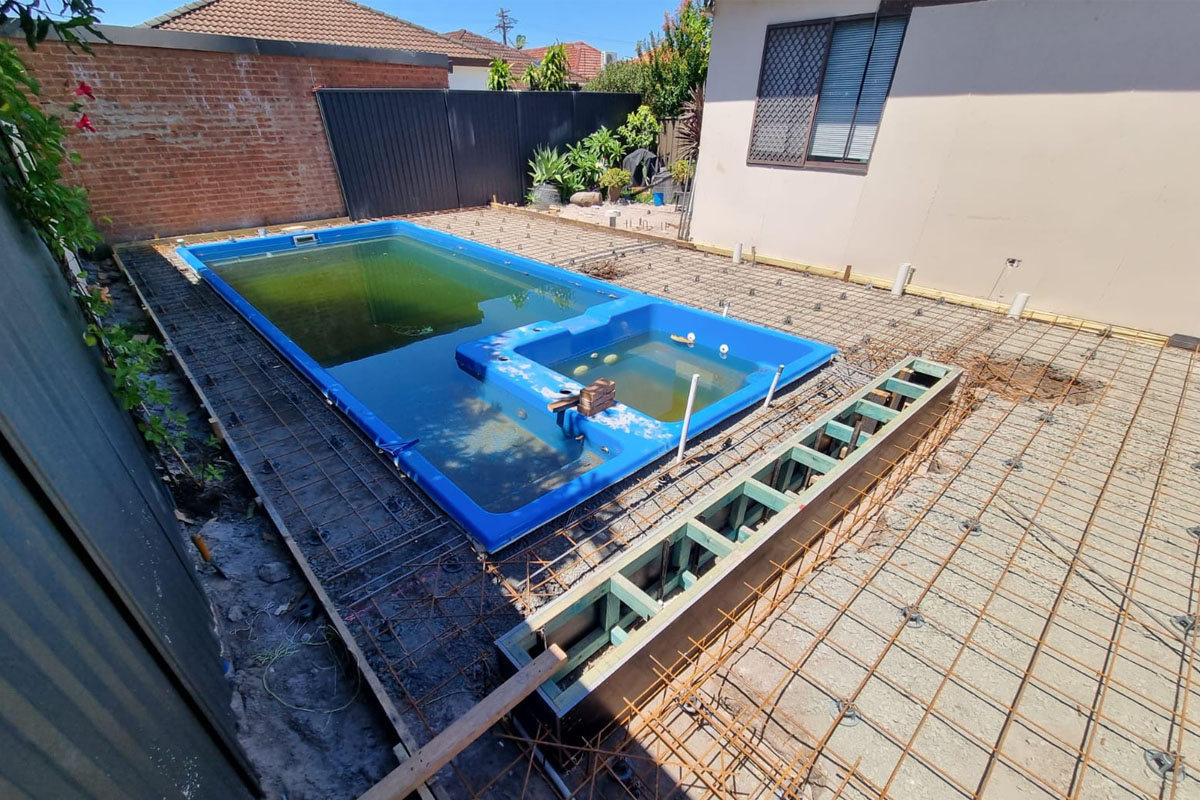
3. Concrete Works
It’s crucial that your fibreglass pool has concrete footings and surrounds.
Here you want the bond bean and surrounding footings to be no less than 120mm thick.
(Of course, these can be thicker if required for design or structural reasons).
Additionally, it would help if you had 32mpa of concrete.
When the concrete footing and steelwork are correctly installed, they’ll hold the structural unit of the pool and surrounding areas very well.
For maximum structural strength, allow the concrete to cure for a minimum of 14 – 28 days before installing the fibreglass shell.
Like many materials, concrete expands with heat and contracts when cool.
Add saw-cut joints every 4-5 metres to counter this and minimise cracking.
You need to follow through with these saw-cut joints to the finished tile and paver surface with a silicon joint. You can use the same colour silicon for these expansion joints as the grout. Ardex has a wide range of coloured grouts that match the exact colour of the silicon Ardex ST Silicon.
Finally, your structure engineer may have indicated additional steelwork in the plans or guidelines supplied.
It’s important to note these and add additional reinforcements.
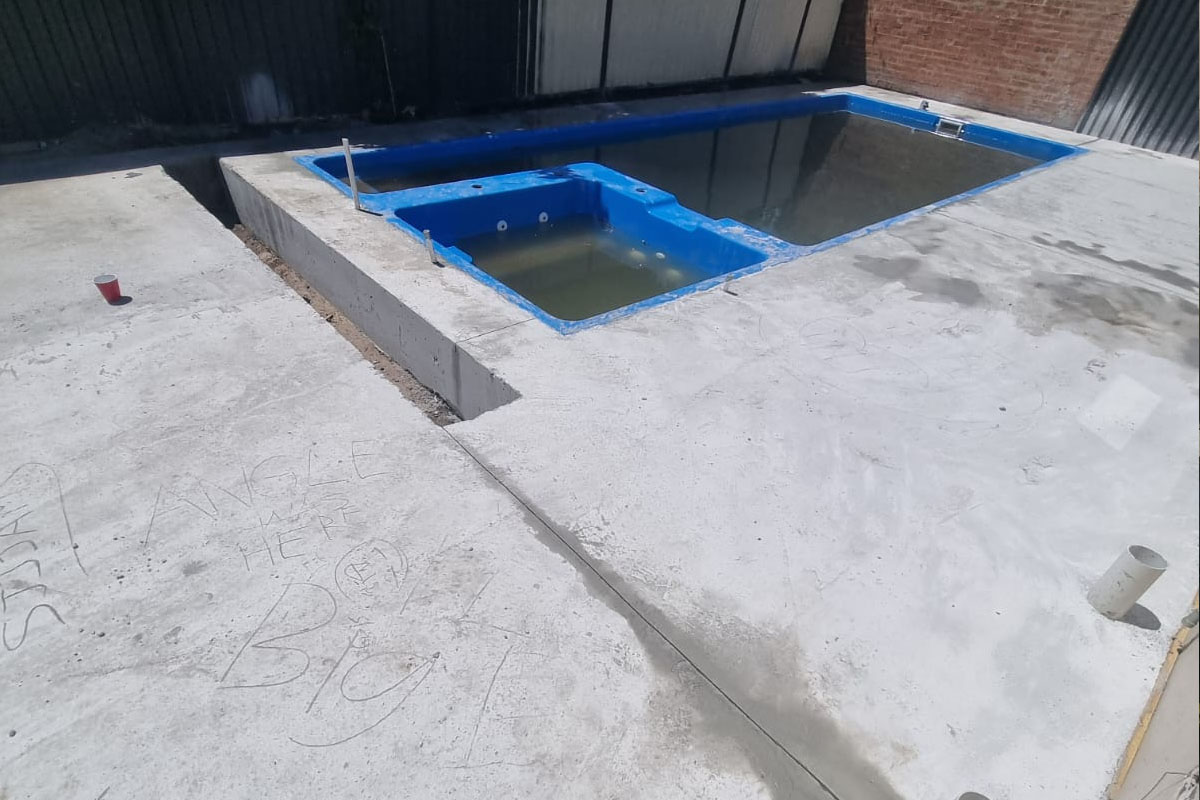
4. Waterproofing
Your fibreglass pool should now have a solid concrete and steel foundation and cured.
This leads us to the third step in the installation process:
Waterproofing.
A pool by nature is prone to high moisture.
This is why a waterproof membrane is essential prior to installing the pool coping and paving.
You want to ensure that the natural stone pavers or porcelain pavers remain as dry as possible.
Here we recommend using Ardex WPM002 for non-moisture-sensitive tiles and all areas that are subjected to constant moisture.
This Ardex waterproofing creates a polyurethane layer on top of the reinforced concreting.
Subsequently stops any efflorescence and moisture arising through to the surface after installation.
And now that you’ve waterproofed everything You need to choose the coping and paving you wish to install
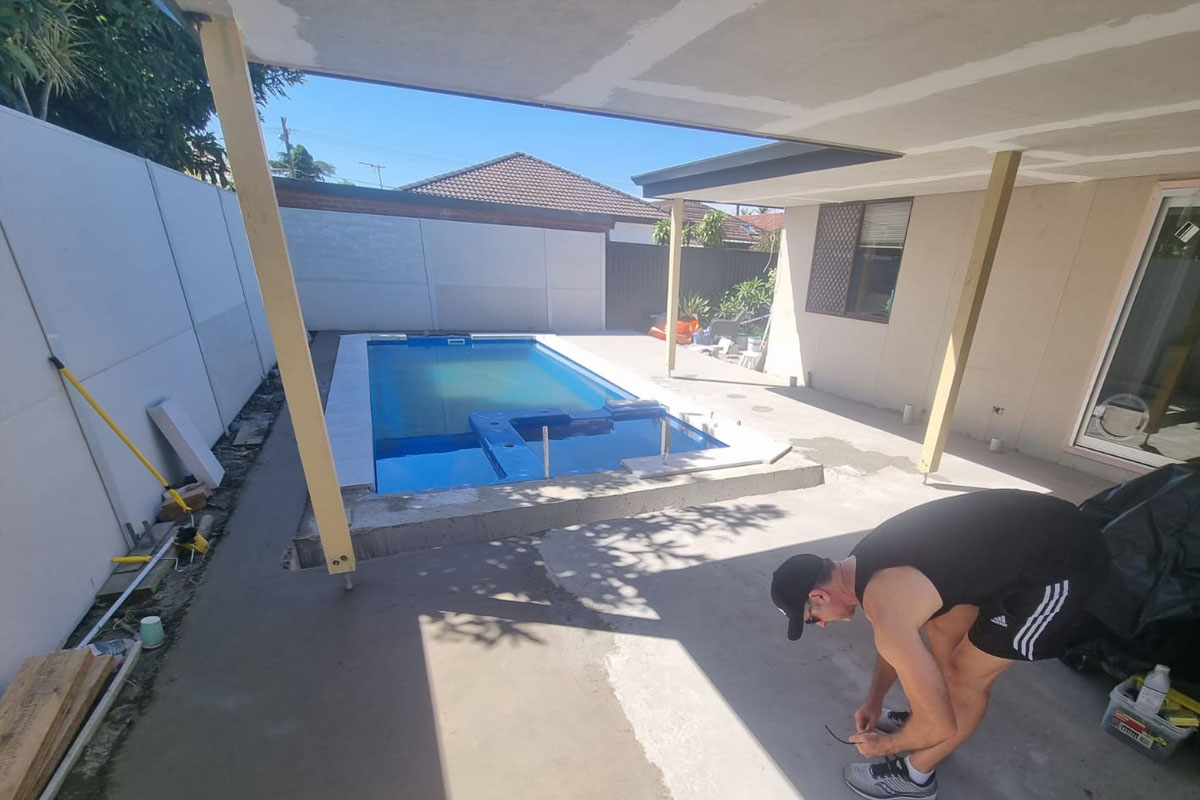
5. Coping and Paving Installation
The last stage in bringing your fibreglass pool to life is installing the correct pool coping and pavers.
Here you can consider either natural stone pavers or structural porcelain pavers for the pool area.
Regardless of what you choose, it’s critical that the coping and surrounds are installed correctly.
And are structurally sound.
If you need any tips on how to choose the best pool pavers and coping, we have prepared a blog earlier. Read more here.
Now, let’s look at pool coping (edge of the pool)
Believe it or not, pool coping is available in a variety of finishes.
These include:
● Drop Edge Coping
● Bullnose Coping
● Pencil Edge Coping
● Mitred Drop Edge Coping (not recommended for fibreglass pools)
So which of the above pool coping options is best for fibreglass pools?
Great question!
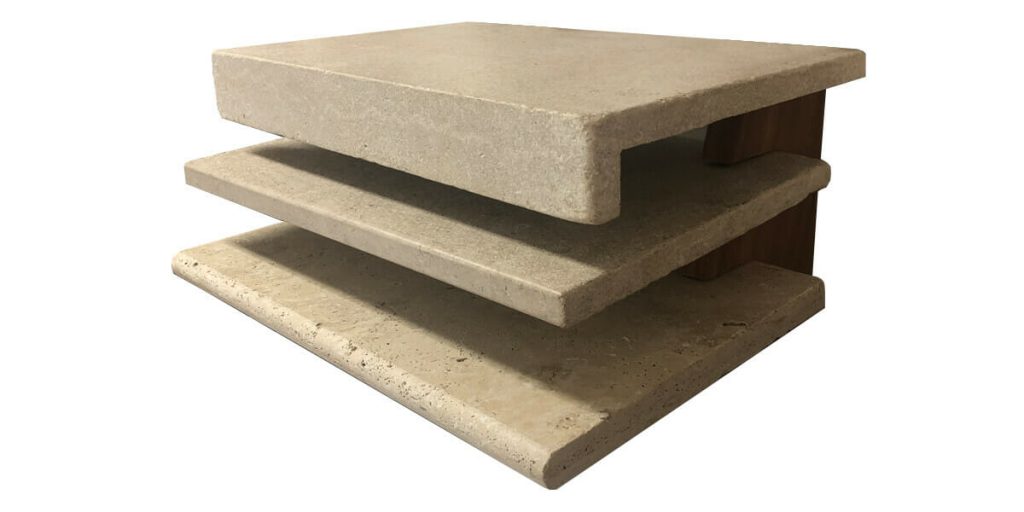
We answer it in more detail in a blog we wrote earlier. Read the blog on the Best Fibreglass Pool Coping options here.
As we mentioned at the start, a fibreglass pool is both an asset and a luxury.
You want it to stand the test of time.
You need to consider things like:
● Is the pool coping appropriate ?
● Is the pool coping stone suitable for salt water, chlorinated, mineral or magnesium pools?
● Is the pool coping have the correct thickness?
● Is the pool coping appropriate for the entirety of the pool?
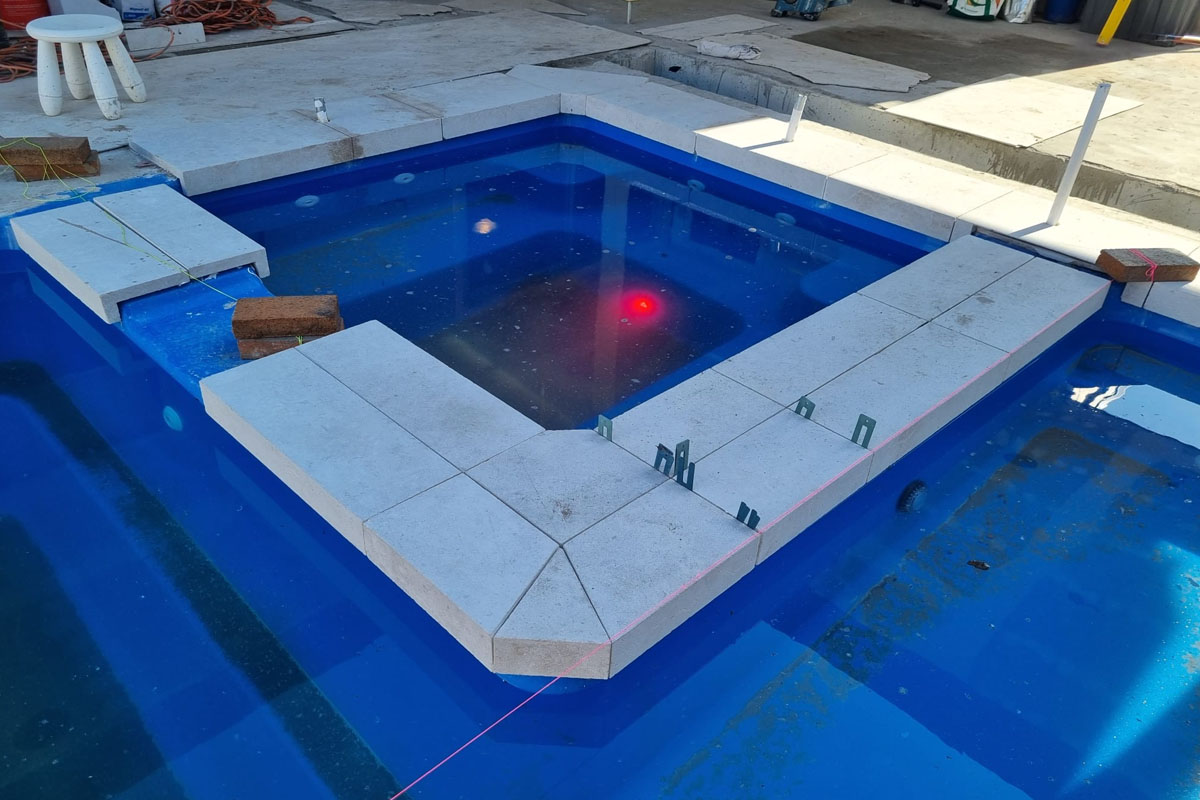
Installing the wrong pool coping pavers is a costly exercise.
Make sure you avoid that contact our team of experts for further information.
Use the contact form.
Or call us at 1300 560 560.
Now let’s talk about what you need to hold the pool coping together. So …
What is the best Fibreglass pool coping adhesive?
Ardex is our go-to fibreglass pool coping adhesives brand.
Many fibreglass pool copings fail due to incorrect installation methods.
These can include using sand and cement mortar for adhesion to the fibreglass.
Or even using tile adhesives.
Neither of these are appropriate for fibreglass pools because they will debond over time and cause structural movement and issues.
Instead, the best adhesives for pool coping to fibreglass pools are:
● Ardex CA20P construction adhesive – use this to bond the stone to your fibreglass pool. Apply directly to the fibreglass portion.
● Ardex x18 tile adhesive mixed with Ardex E90 fibre reinforcement liquid – apply this to the concrete substrate.

6. Sealing
Once you have completed the other five steps, you want to ensure that the pavers and coping are sealed correctly.
Why?
Well, you want them to stand the test of time, right?
And sealing pool coping tiles protects the paver’s surface from wear and tear.
Environmental conditions, foot traffic, chlorine, salt, and many other factors contribute to basic wear and tear.
Sealing also reduces any minerals from penetrating into the stone from the substrate and surface.
We strongly recommend pre-sealing the natural stone pavers or tiles on all 6 sides prior to installation. Aquamix-ProBlock is our go-to sealer, especially for salt and chlorine pools.
We also recommend:
● AquaMix – Sealers Choice Gold as a top sealer to be applied onto the stone’s surface after grouting.
● Aqua Mix – Enrich and Seal to protect and (in some cases) enhance the stone’s surface appearance.
The sealer should be applied in two coats.
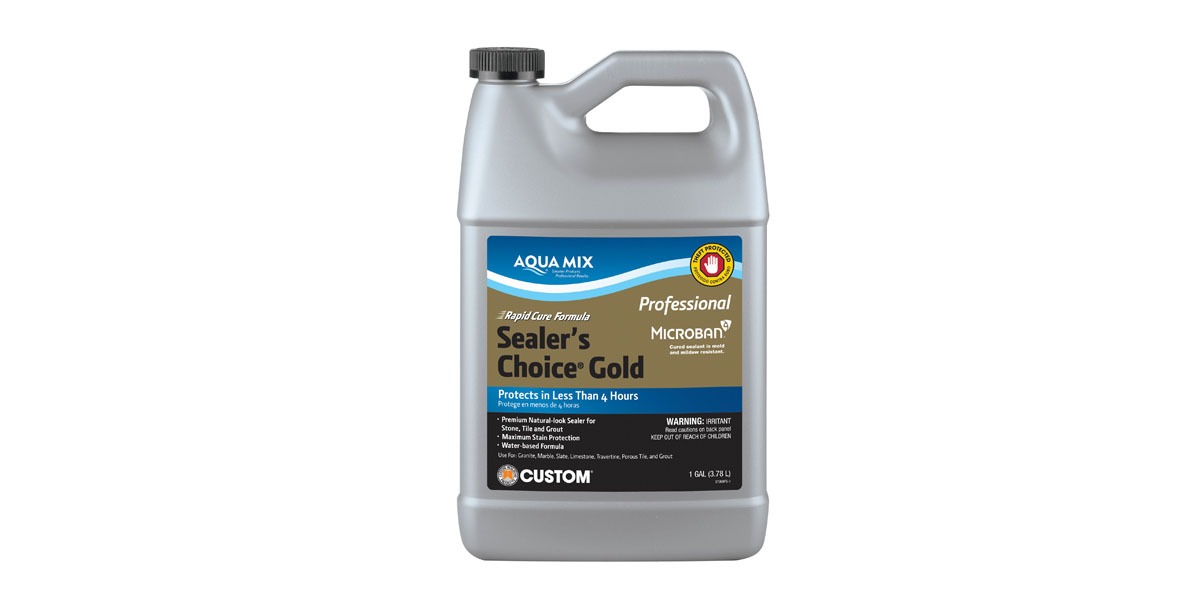
Leave it in so it penetrates the stone and grout.
This will shield it from moisture penetrating the exposed stone surface.
It will also hold a barrier to repel any leaf and stain damage.
And there you have it!
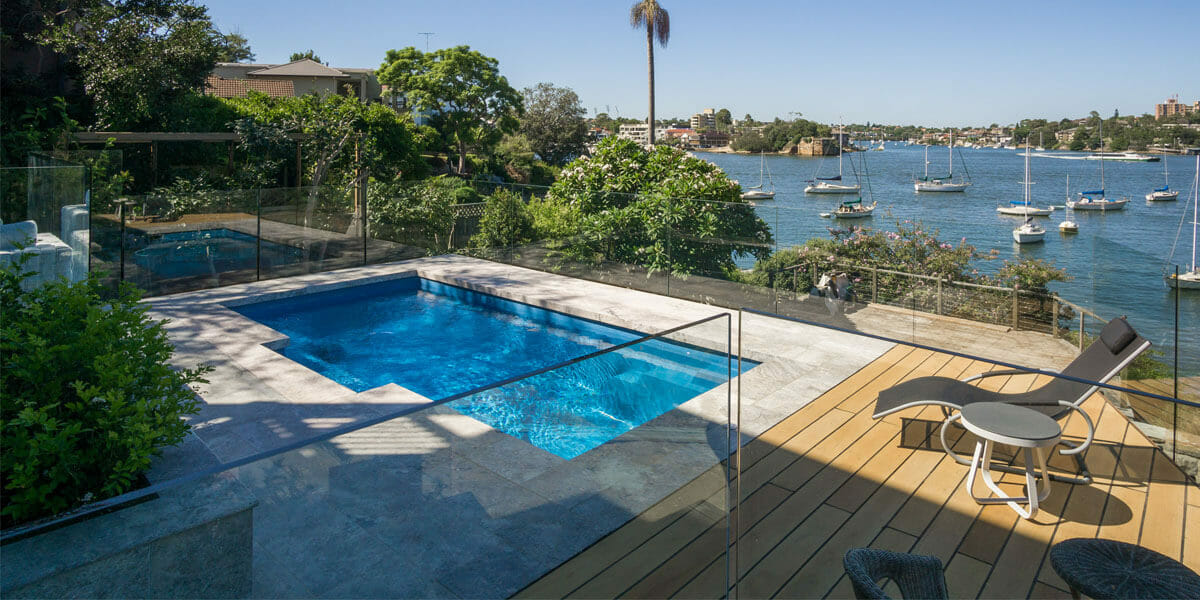
6 critical considerations for installing pool coping and pavers for fibreglass pools.
And if you need any additional help with selecting pool pavers for your fibreglass pool that will match your lifestyle needs call us on 1300 560 560 or visit our beautiful showroom in Glebe, Sydney.
We pride ourselves on listening to your unique needs and sharing industry best practices to help you find the most suitable, ethical, and tailored solution for your home project.
If you’re looking for the best installer to complete your fibreglass pool project, we send you to RBG Landscapes with high recommendations.
Rhys Galvin is one of the best in the industry. You can contact him at 0415 874 416 ![]()
